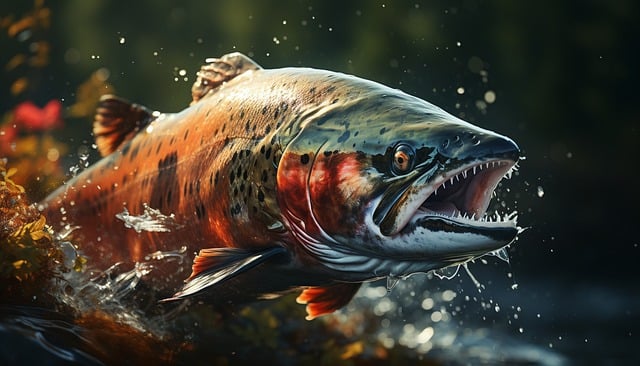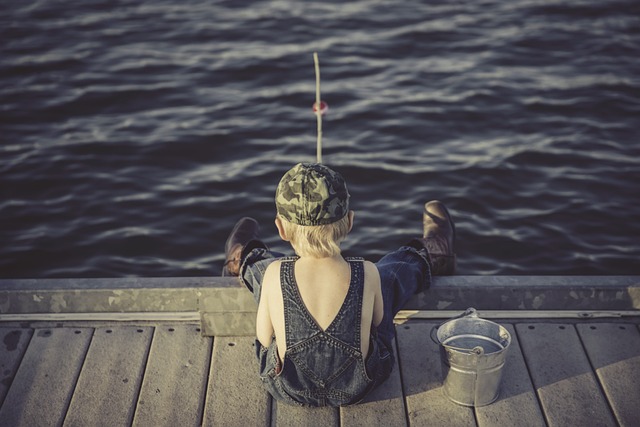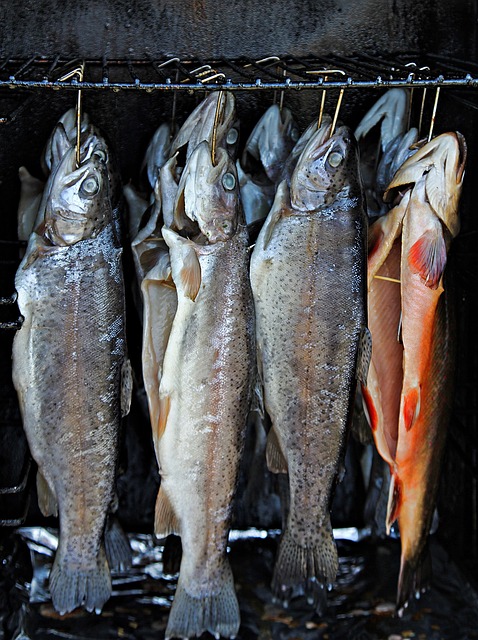Understanding river trout behavior and habitat is crucial for successful fishing. Gear selection includes lightweight rods, versatile reels, floatation line, and durable leaders. Key strategies involve adapting casting to current, complying with regulations, seeking consistent currents and cover, and precise hook setting. Responsible handling involves gentle techniques and prompt release to minimize stress. These trout fishing tips enhance the experience while promoting sustainable practices.
New to the world of river trout fishing? This beginner’s guide covers everything you need to know to start catching these slippery freshwater fish. From understanding river trout behavior and choosing the right gear, to locating prime spots and mastering casting techniques, we’ve got you covered. Learn responsible handling and releasing tips to ensure a positive impact on the ecosystem. Get ready to dive into the art of catching trout in rivers with these essential trout fishing tips.
- Understanding River Trout Behavior and Habitat
- Choosing the Right Gear for River Trout Fishing
- Locating Ideal Spots to Catch Trout in Rivers
- Effective Casting and Hook Setting Techniques
- Tips for Handling and Releasing Trout Responsibly
Understanding River Trout Behavior and Habitat

Knowing the behavior and habitat of river trout is key to a successful catching experience for beginners. Trout are often found in clear, cold rivers with gravel or rocky bottoms—a habitat that provides them with ample hiding spots and easy access to food. They are sensitive to water temperature, typically preferring cooler waters, especially during warmer months when they may move to deeper, more shaded areas of the river. Understanding these habits can help you choose the right spot to fish.
River trout are also selective in their feeding patterns, often targeting specific types of bait or lures. Observing the currents and knowing where food sources gather can give you an edge. Slow-moving currents and pool areas are popular haunts for trout, as they provide calm waters ideal for catching their prey. Using these trout fishing tips and understanding their behavior will enhance your chances of catching these elusive fish when river trout fishing.
Choosing the Right Gear for River Trout Fishing

When it comes to river trout fishing, selecting the right gear is half the battle won. For beginners, it’s best to start with a simple setup to get a feel for the sport before investing in specialized equipment. A lightweight spinning or fly-fishing rod between 6 and 7 feet long is ideal for most river conditions. Pair this with a reel that can handle different line weights, typically ranging from 4 to 10 pounds. Choose a floatation line—it helps you see your line and cast more accurately—and consider using a leader made of material like fluorocarbon or nylon, which increases the effective casting weight while remaining flexible.
Remember, the right gear isn’t just about functionality; it’s also about personal preference. The weight of your rod, the feel of the reel, and even the color of your line can make a difference in your comfort and success as a trout fisherman. So, take some time to test out different combinations until you find what feels best for you. As for trout fishing tips specific to rivers, remember to vary your casting techniques and presentation depending on the current and depth, and always be mindful of local regulations regarding catch limits and seasonal restrictions.
Locating Ideal Spots to Catch Trout in Rivers

When it comes to catching trout in rivers, locating the ideal spots is half the battle won. Beginner anglers should focus on areas with consistent currents and cool, oxygen-rich water, as these are prime habitats for trout. Look for shallow runs, riffles, and pools, where fish tend to feed and rest. Pay attention to the river’s overall structure: boulders, logs, and submerged vegetation provide cover and hiding spots for trout, making them more susceptible to biting.
River trout fishing is an art that involves understanding water movement, light penetration, and the behavior of these elusive fish. Observing other anglers and learning from their techniques can also be valuable Trout fishing tips. Keep an eye out for rising trout, which often indicate a feed, and be prepared to cast your line precisely into these sweet spots. With patience and practice, you’ll soon master the art of catching trout in rivers.
Effective Casting and Hook Setting Techniques

When it comes to catching trout in rivers, mastering effective casting and hook setting techniques is paramount. Begin by choosing the right equipment tailored for river trout fishing. A lightweight or medium-weight rod paired with a matching reel spooled with fluorocarbon or monofilament line will offer precision and sensitivity. These setups allow you to cast lures or bait accurately while maintaining touch with the water, crucial for detecting subtle takes.
During casting, focus on smooth, controlled motions. Practice makes perfect, so spend time on your backcast and forward cast techniques. Aim for a long, level cast, minimizing exaggerated upward arcs that can disturb the surface. Once you reach your target, pause briefly to allow any ripples to subside before setting the hook. A gentle but firm pressure at the first sign of a trout’s strike will ensure the hook sets securely, increasing your chances of catching these elusive creatures.
Tips for Handling and Releasing Trout Responsibly

When you catch a trout, handle it with care to minimize stress and injury. Use a net designed for fish or your hands to carefully remove the hook. If using your hands, grip the fish gently behind the head and slip your fingers under its gills to lift it out of the water. Support its body with your other hand.
Releasing trout responsibly is just as important as catching them. Try to release the fish back into the river as quickly as possible, giving it a chance to swim away unharmed. Keep the line tight while holding the fish to prevent it from thrashing around and causing injury. If the fish seems exhausted or injured, consider keeping it for dinner, but ensure you do so humanely and in accordance with local regulations. Always remember, sustainable trout fishing involves respecting the environment and the well-being of the fish.
Catching trout in rivers is an art that combines knowledge of local habitat, precise gear selection, and subtle techniques. By understanding river trout behavior, choosing the right equipment, and mastering casting and hook setting, beginners can enjoy successful days on the water. Remember to always practice responsible handling and release methods to preserve these magnificent fish for future generations, ensuring a sustainable trout fishing experience. These Trout fishing tips will empower you to navigate any river and increase your chances of catching these elusive creatures.



